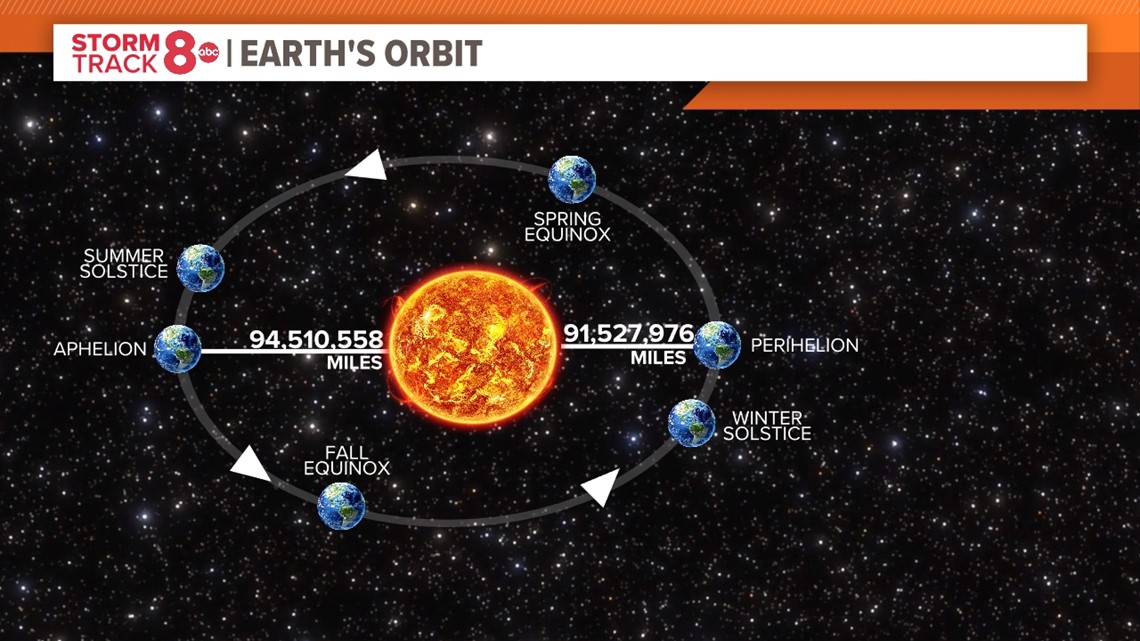MOLINE, Ill — February brings about some profound changes in the amount of daylight we see here in the Quad Cities. For example, after weeks of early sunsets, we now see that sunset occurs after 5 p.m. rather than before! However, our sunrise times typically don't change as nearly as fast as our sunset times do. Mike from Moline, Illinois asks, "Why is it when the days start to get longer that the sunsets are getting later much quicker than the sunrises getting earlier?" Let's dive in!
There are two main reasons at play as to why these time scales are different:
1. Earth's orbit
Earth doesn't travel around the sun in a perfect circle as it orbits, rather it travels in the shape of an ellipse. We've talked before about the perihelion and aphelion, the two most notable dates during the year in which Earth is either farthest away or closest to the sun. The proof is in the pudding there considering the notable differences in distance, with the perihelion measuring Earth 91.5 million miles away from the sun, while the aphelion comes in at 94.5 million miles. Definitely not an even split or a perfect circle when it comes to distance!


Even though the amount of daylight is technically increasing, in January and early February we are moving through a part of the orbit where the change in daylight is more substantial for evenings versus mornings. I know, not great if you are an early bird!
2. Earth's tilted axis
This one is a bit more tricky. Earth's axis of rotation isn't perpendicular to its orbital plane. This tilt, along with the elliptical orbit, creates a complex effect named the "equation of time." This equation is the difference of time measured by the sun (solar time) versus time measured by our clocks. We might expect that the length of an apparent solar day would always be the same since the sun rises in the east and sets in the west regularly. However, depending on the time of year, a solar day can be up to 22 seconds shorter or even 29 seconds longer than 24 hours.


While sunrises might feel like they are taking forever to move up even earlier in the day, no worries! Soon that will change and by mid-February, the equation of time will start favoring those often longed-for earlier sunrises.
In fact, take a look at the difference in the graphic above! January has a huge discrepancy in the amount of change for sunrises and sunsets at the beginning and end of the month. That change is a lot more subtle in February. Progress!
Have a question that you would like me to answer for an upcoming Ask Andrew segment? Submit it, here!



